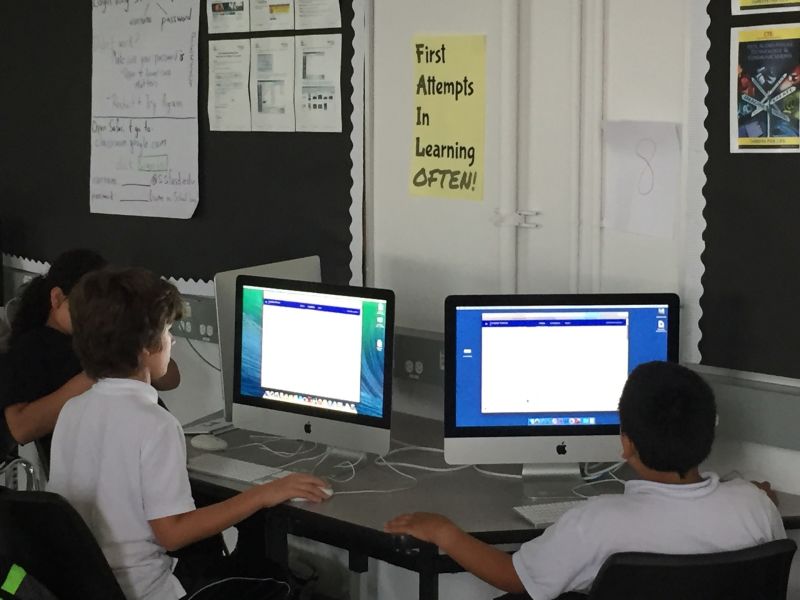The computer programming class at Presidio Middle School in San Francisco is humming with excitement as the teacher, Grey Todd, explains the day's assignment to a group of eager sixth-graders. They'll be programming a ball to bounce around a computer screen as part of a semester-long class that teaches them the basics of computer programming.
It's part of a district pilot in 12 middle schools so far, and also one of the first in the country to be teaching students so young to program.
"Whether we like it or not, kids are spending more and more time with screens in front of them. ... So to teach them to use that in a responsible way and to be able to control it in a responsible way, I think it’s vital," Todd said.
The pilot started at the beginning of the school year. If successful, it will expand to a pilot program for preschoolers in the district this spring.
The district already offers computer programming classes as an elective in high schools or as part of afterschool programs in middle and elementary schools. But this will be its first concerted effort to make a computer programming class that's available and mandatory for all students. The students program in an open-source language called Scratch, developed by MIT and designed for first-time coders. Users create games and animations by moving pieces of code around like building blocks.
